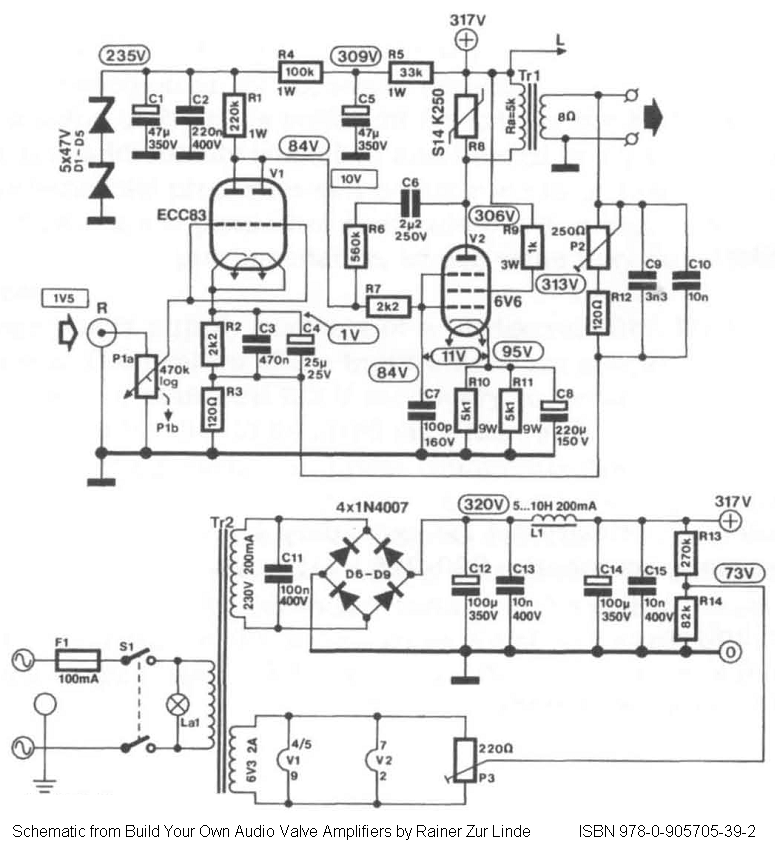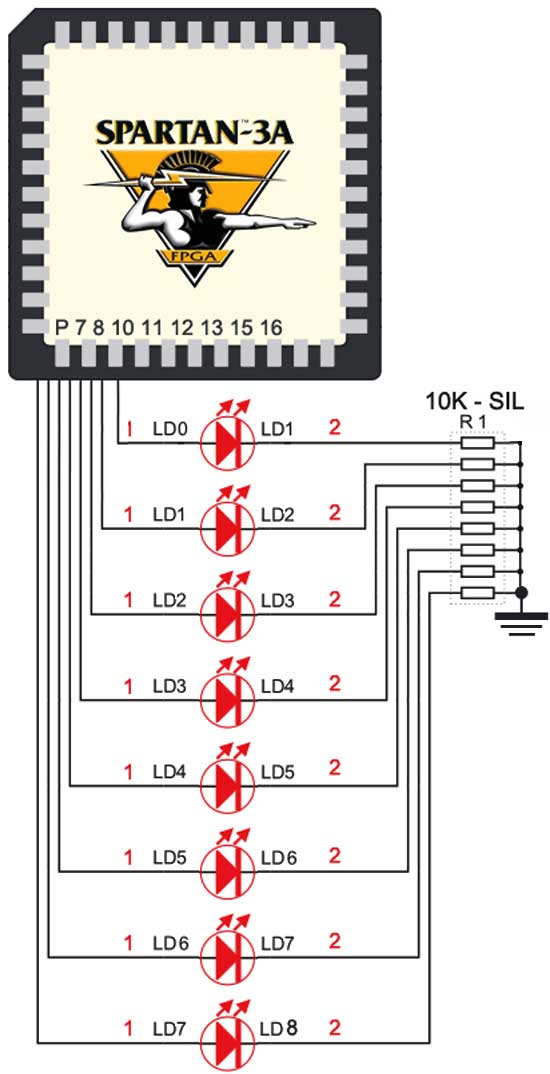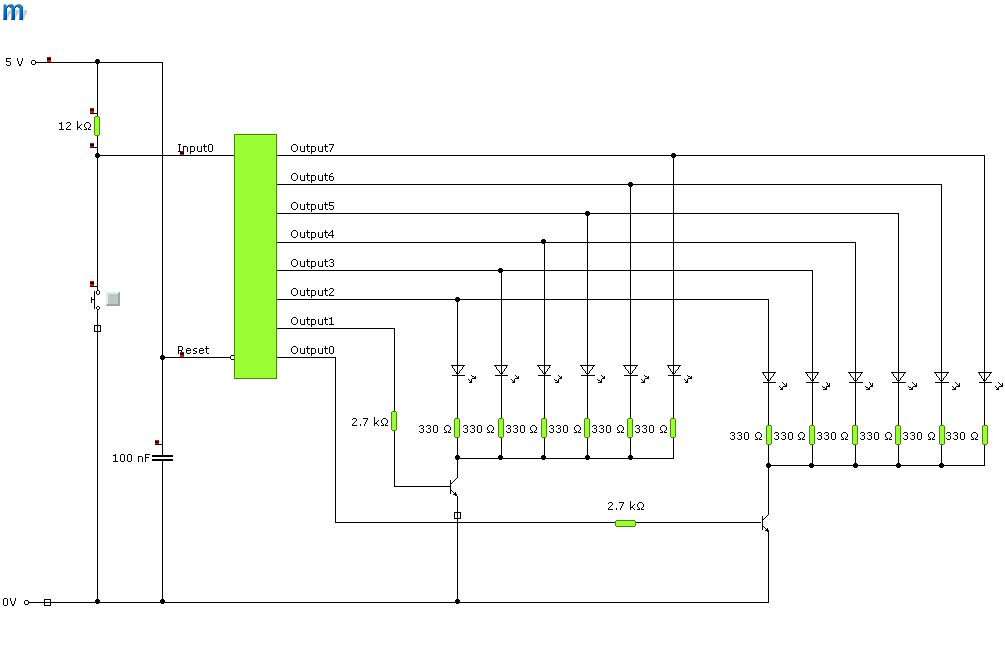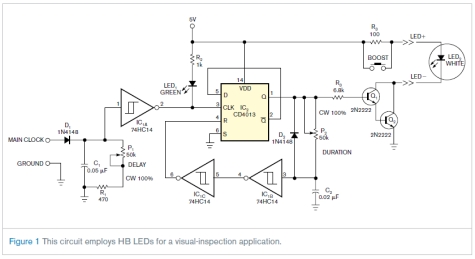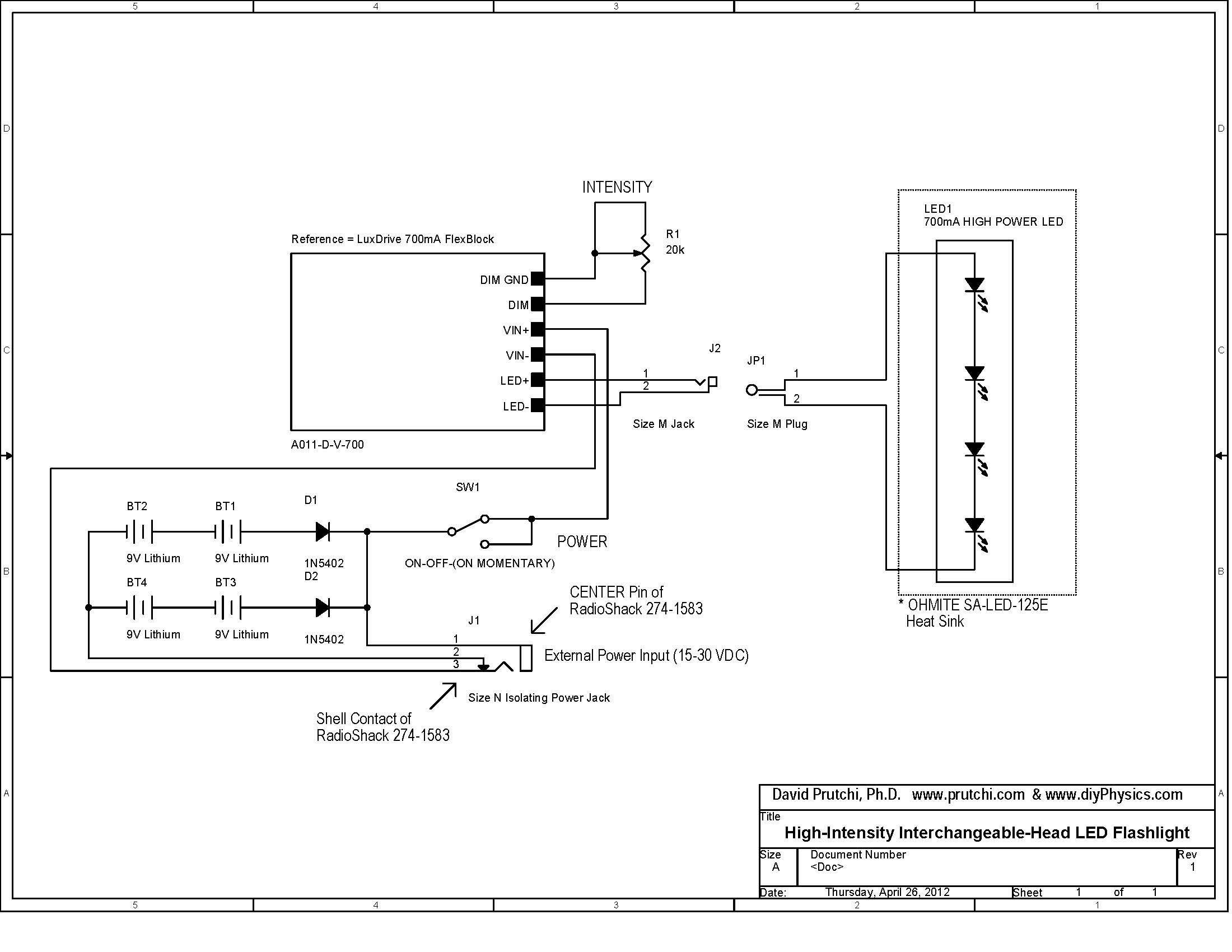
72 led clock
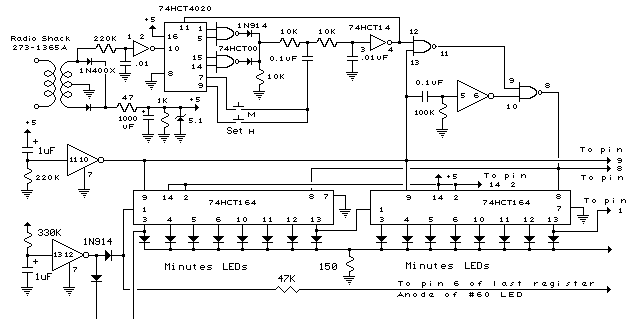
The circuit utilizes 60 individual LEDs to represent the minutes of a clock and 12 LEDs to indicate the hours. The power supply and timing circuitry are consistent with those outlined in the previous 28 LED clock circuit. The minutes section of the clock consists of eight cascaded 74HCT164 shift registers, allowing a single bit to be recirculated through 60 stages to indicate the correct minute of the hour.
The clock circuit operates on a fundamental principle of digital electronics, where the 74HCT164 shift registers play a critical role in controlling the LED indicators. Each of the shift registers is capable of storing and shifting a single bit of information. By cascading eight of these registers, a total of 60 bits can be effectively managed, corresponding to the 60 minutes in an hour.
The circuit begins with a stable power supply that provides the necessary voltage and current for the LEDs and the logic components. The timing circuitry generates clock pulses that dictate the operation of the shift registers. Each pulse causes the data within the registers to shift, allowing the LEDs to illuminate sequentially, thereby indicating the passage of time.
For the hour display, a separate section of the circuit is dedicated to managing the 12 LEDs. This section can be designed using additional shift registers or a different logic configuration that accommodates the 12-hour format. The transition between minutes and hours is handled through a control mechanism, ensuring that as the minute count reaches 60, it resets and increments the hour count appropriately.
The overall design emphasizes efficiency and simplicity, utilizing readily available components. The cascading of shift registers not only allows for a compact design but also minimizes the number of required pins from the microcontroller or timer IC that drives the clock, thereby optimizing the circuit for space and power consumption. This modular approach also facilitates troubleshooting and future upgrades, as individual sections can be modified without impacting the entire system.
In conclusion, this clock circuit design effectively demonstrates the application of digital logic components in timekeeping, providing a clear visual representation of time through the use of LEDs while maintaining a straightforward and reliable operation.In the circuit, 60 individual LEDs are used to indicate the minutes of a clock and 12 LEDs indicate hours. The power supply and time base circuitry is the same as described in the 28 LED clock circuit above. The minutes section of the clock is comprised of eight 74HCT164 shift registers cascaded so that a single bit can be recirculated through the 60 stages indicating the appropriate minute of the hour..
🔗 External reference
The clock circuit operates on a fundamental principle of digital electronics, where the 74HCT164 shift registers play a critical role in controlling the LED indicators. Each of the shift registers is capable of storing and shifting a single bit of information. By cascading eight of these registers, a total of 60 bits can be effectively managed, corresponding to the 60 minutes in an hour.
The circuit begins with a stable power supply that provides the necessary voltage and current for the LEDs and the logic components. The timing circuitry generates clock pulses that dictate the operation of the shift registers. Each pulse causes the data within the registers to shift, allowing the LEDs to illuminate sequentially, thereby indicating the passage of time.
For the hour display, a separate section of the circuit is dedicated to managing the 12 LEDs. This section can be designed using additional shift registers or a different logic configuration that accommodates the 12-hour format. The transition between minutes and hours is handled through a control mechanism, ensuring that as the minute count reaches 60, it resets and increments the hour count appropriately.
The overall design emphasizes efficiency and simplicity, utilizing readily available components. The cascading of shift registers not only allows for a compact design but also minimizes the number of required pins from the microcontroller or timer IC that drives the clock, thereby optimizing the circuit for space and power consumption. This modular approach also facilitates troubleshooting and future upgrades, as individual sections can be modified without impacting the entire system.
In conclusion, this clock circuit design effectively demonstrates the application of digital logic components in timekeeping, providing a clear visual representation of time through the use of LEDs while maintaining a straightforward and reliable operation.In the circuit, 60 individual LEDs are used to indicate the minutes of a clock and 12 LEDs indicate hours. The power supply and time base circuitry is the same as described in the 28 LED clock circuit above. The minutes section of the clock is comprised of eight 74HCT164 shift registers cascaded so that a single bit can be recirculated through the 60 stages indicating the appropriate minute of the hour..
🔗 External reference

